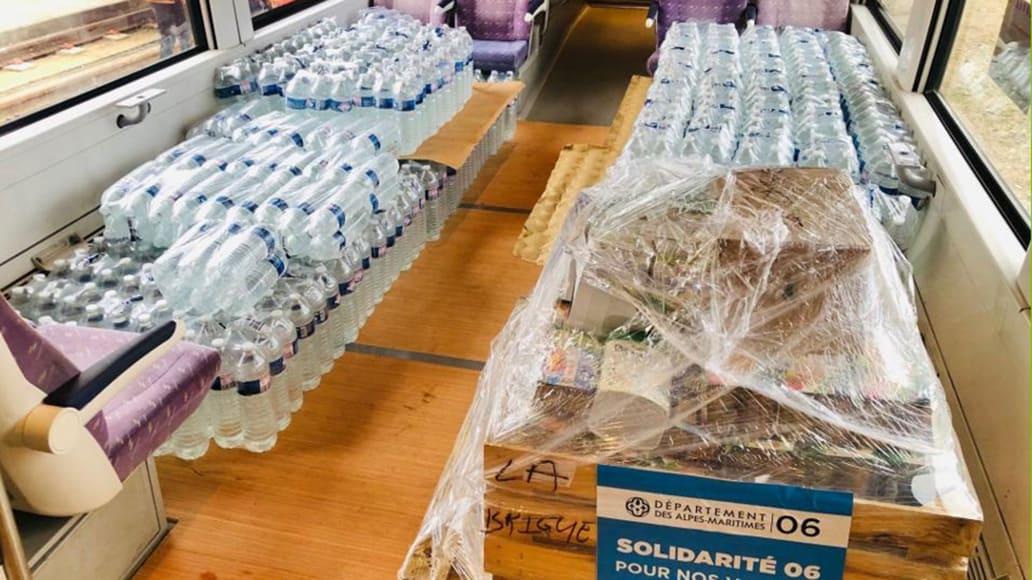Study project used for disaster relief after storm Alex

After storm “Alex”, thanks to the proposal of Marc Ciais, ESTACA graduate and speaker in the urban transport program, TER Sud-Provence-Alpes-Côte d’Azur ran trains loaded with drinking water and food from Nice to Breil-sur-Roya.
From a study project in the railway sector...
”How to transform a passenger train into a freight train, with a maximum load per m2, and a target total mass of the loaded vehicle equal to that of the train filled with passengers?”
This was the project that Marc Ciais, SNCF engineer in charge of the TER Azur operational maintenance unit and professor at ESTACA, proposed his students a few years ago.
This type of study project is one of the many academic projects that students work on throughout their training, which in some cases lead to concrete applications. Project-based teaching is an integral part of ESTACA’s DNA. From the very first years of training, the School encourages skills acquisition through these projects, proposed and supervised by School staff, industrial partners, the School’s laboratories, or even by students for vehicles or systems designed and built within an association. But the students in the railroad program who worked on transforming a passenger train into a freight train had not imagined that one day their study would be used in record time to supply disaster areas in the South of France.
… to industrialization by an SNCF team to get a freight train within 48 hours
After storm Alex hit the Var department in early October, when Marc Ciais heard that the SNCF had to deploy “relief” trains to supply drinking water and basic necessities to populations cut off from the rest of the world due to a lack of accessible roads, he immediately thought of this project, which his students had been working on. He offered to apply the study and transform a traditional passenger train into a freight train to transport the maximum amount of goods safely to the Roya Valley. The advantage of the solution is that it can be implemented quickly, as the cargo train is hitched to a passenger train. To create the necessary space and increase the quantity of pallets on board, the plan was as follows: remove and move 60 of the 170 seats and the luggage racks and interior glass walls, and then lay a protective floor to avoid damaging the train. The SNCF team was able to quickly remove the interior fittings from some carriages and adapt the floors for the transport of pallets. The teams were thus able to industrialise arelief train\” in 48 hours.
Thanks to this commitment and technical prowess, the train was able to deliver the equivalent of 25 pallets, or 12 tonnes of goods, every morning, to the disaster areas.













